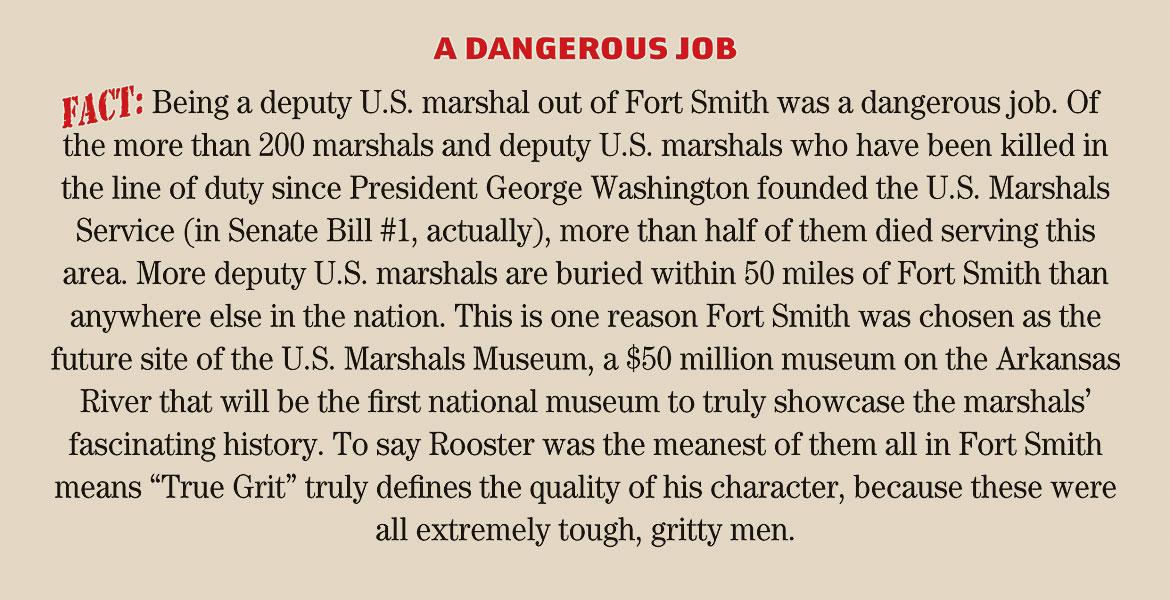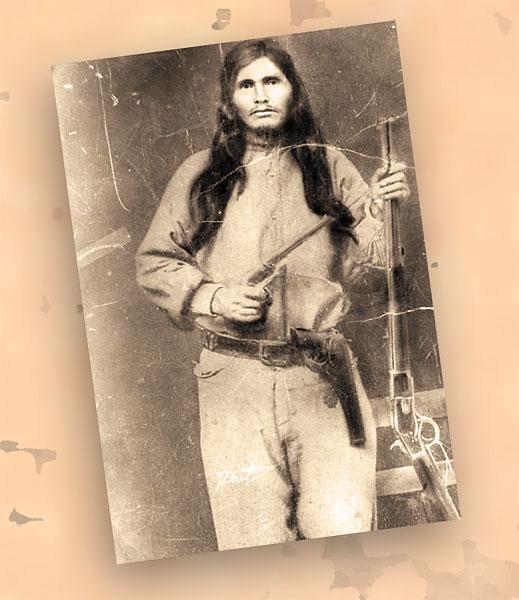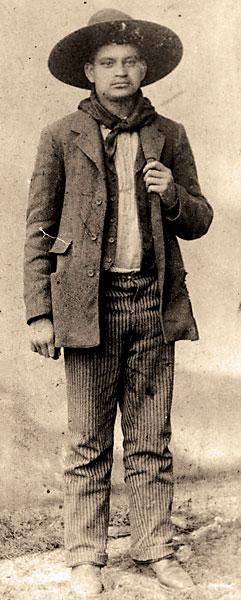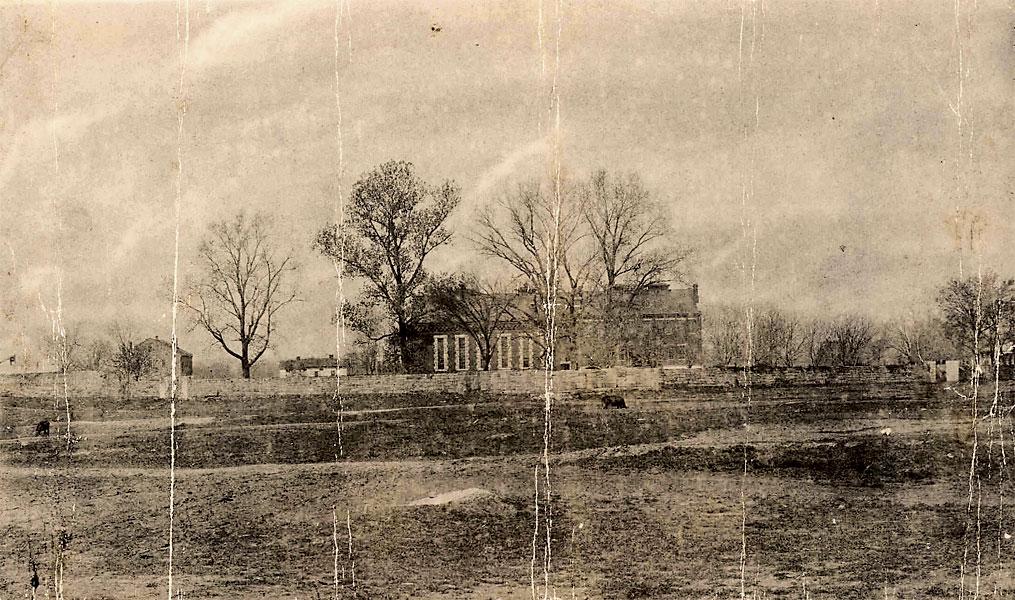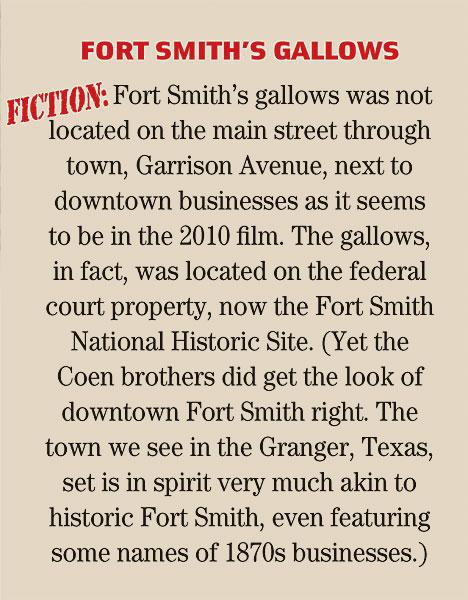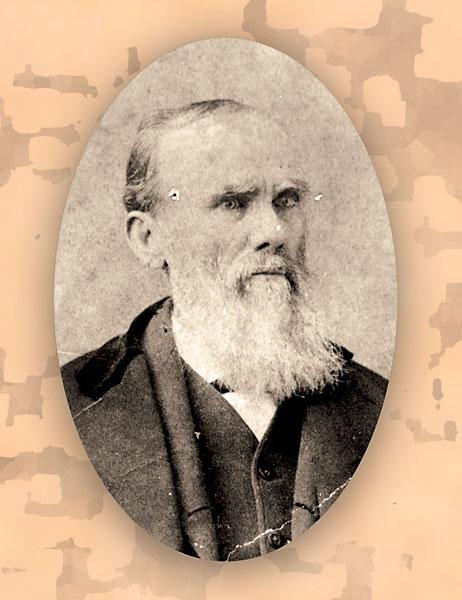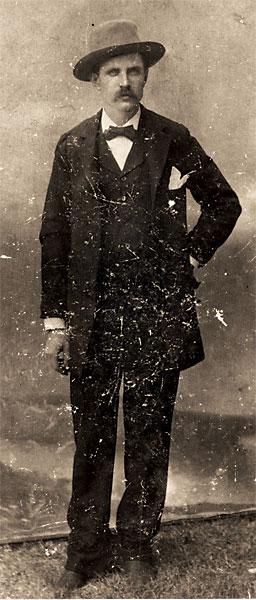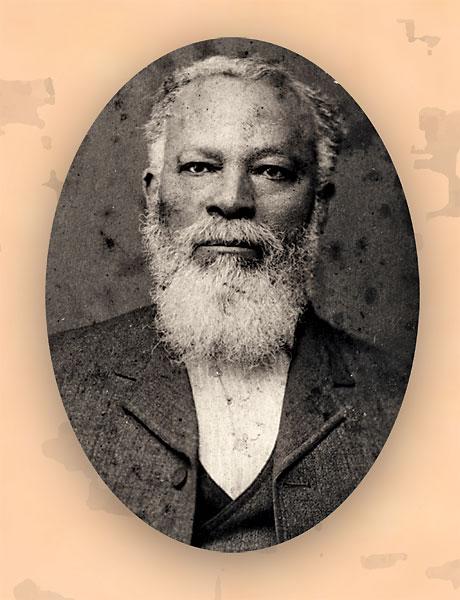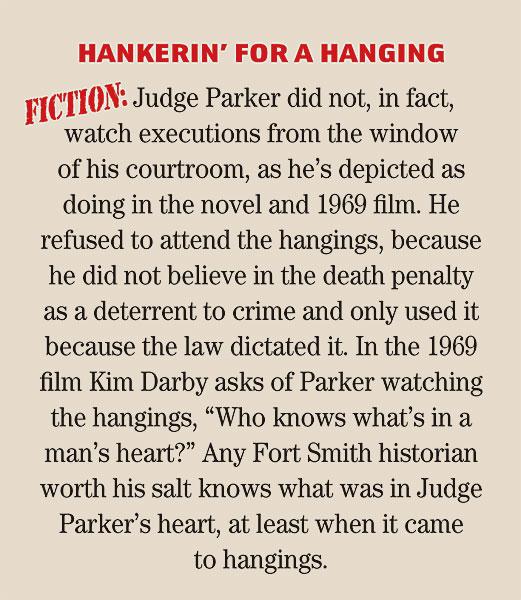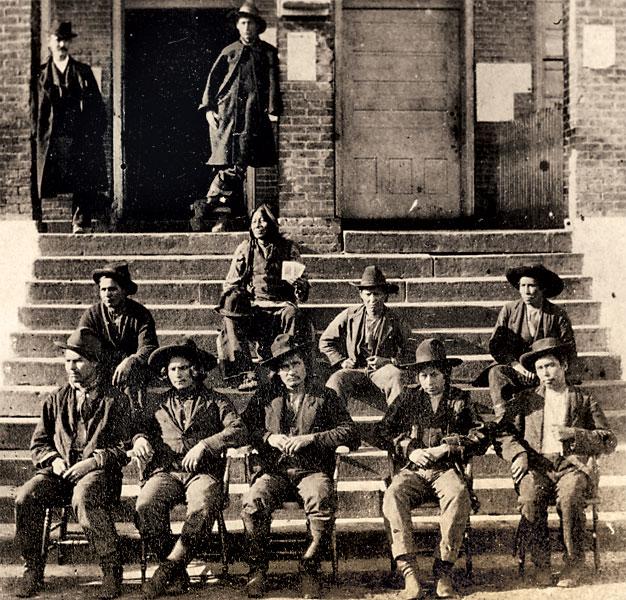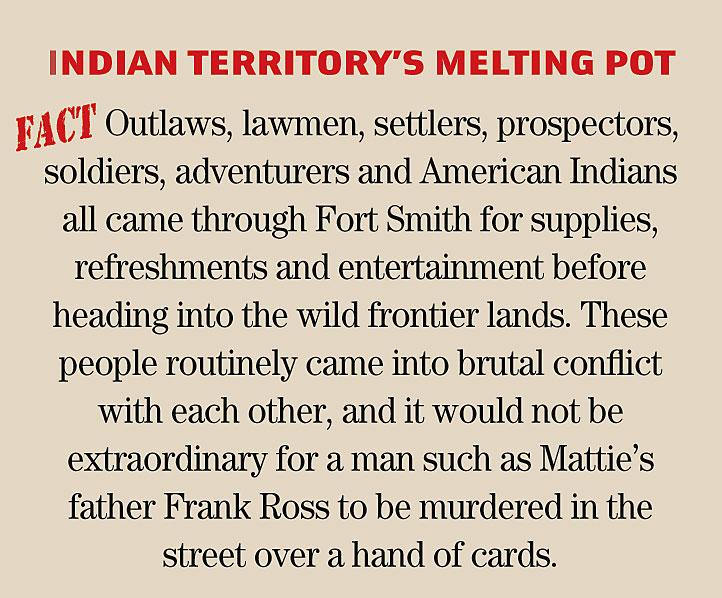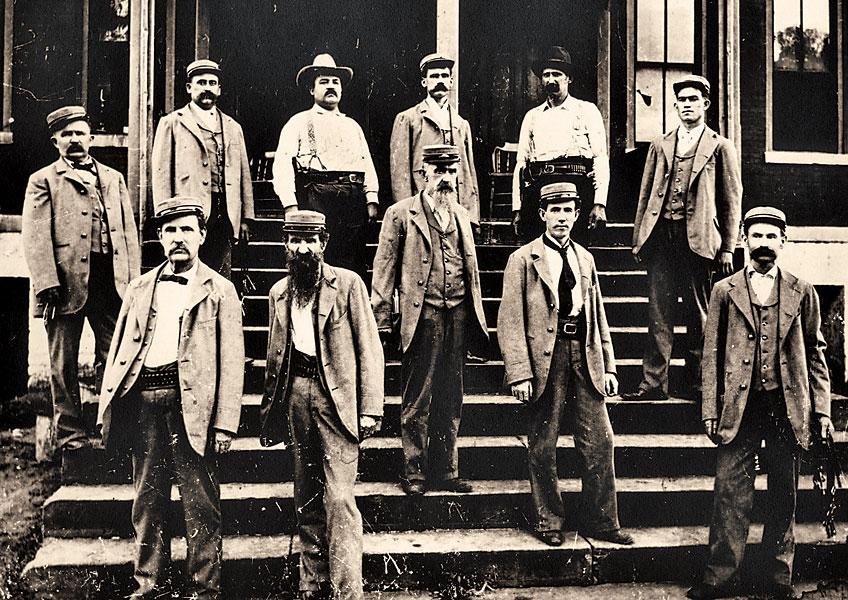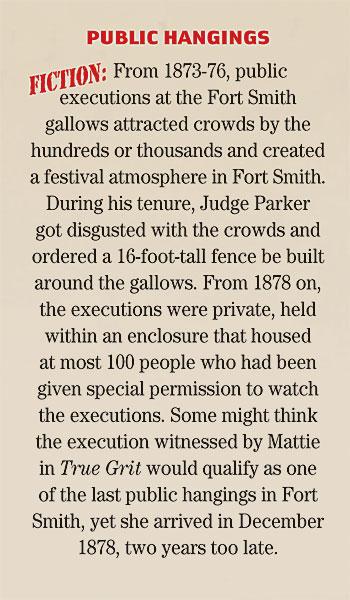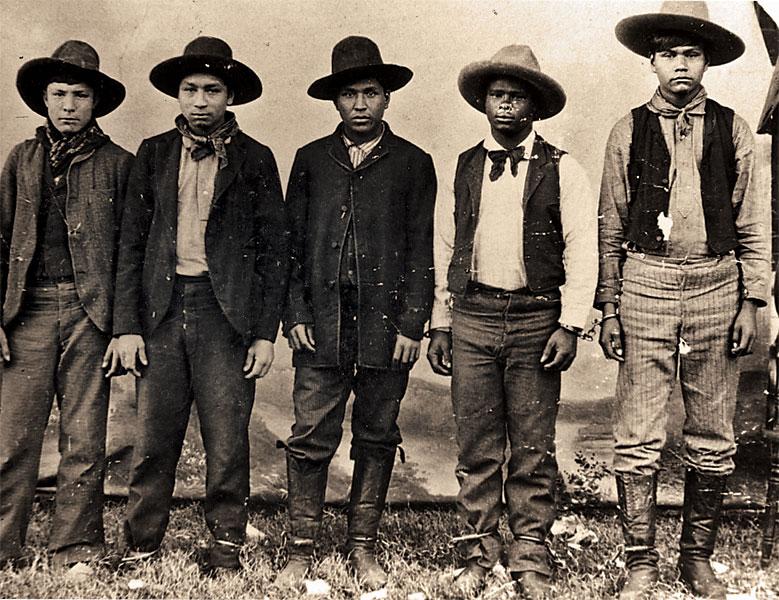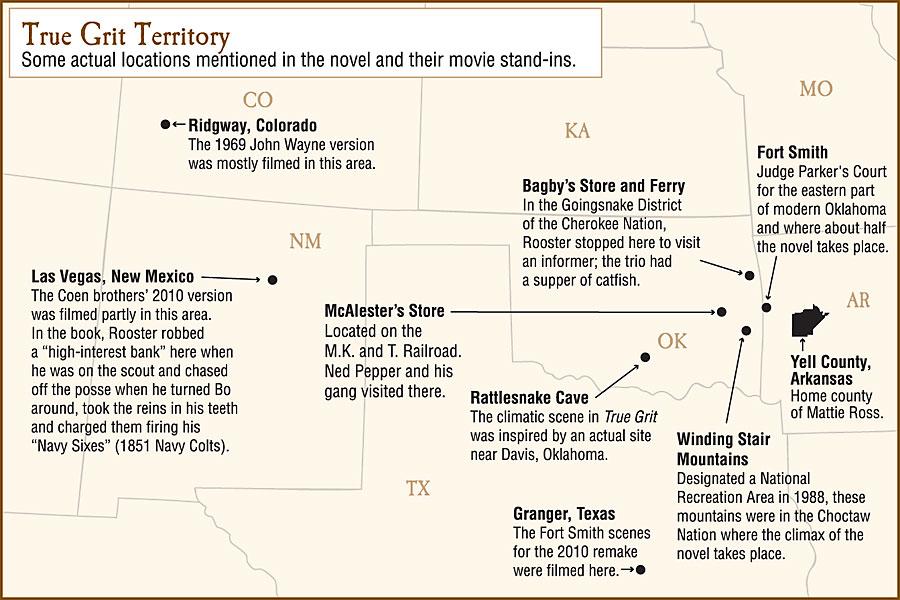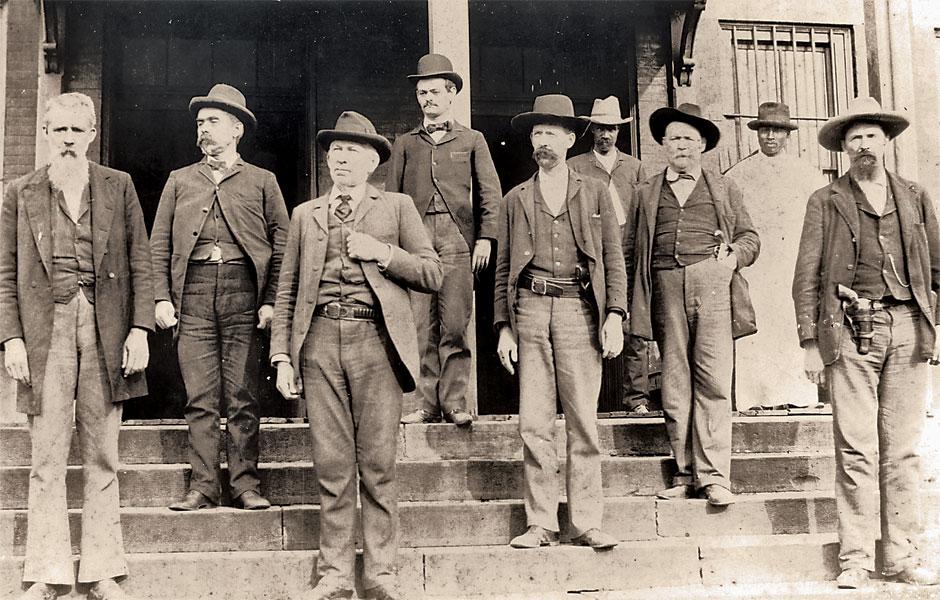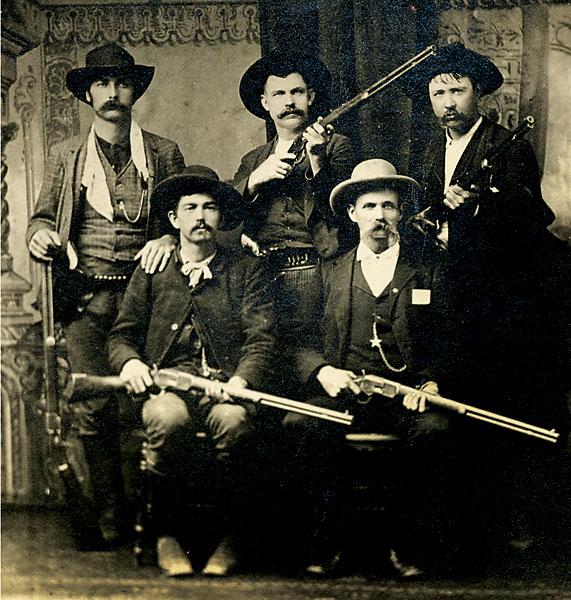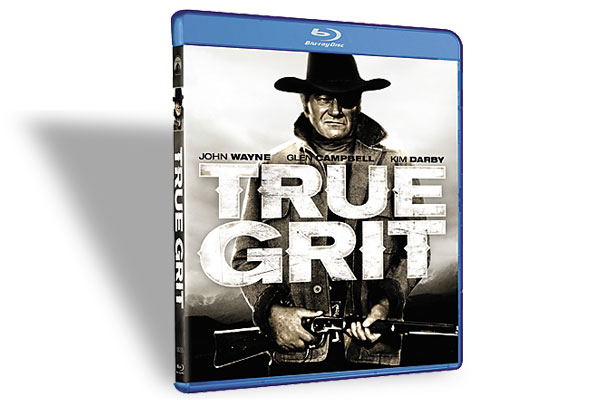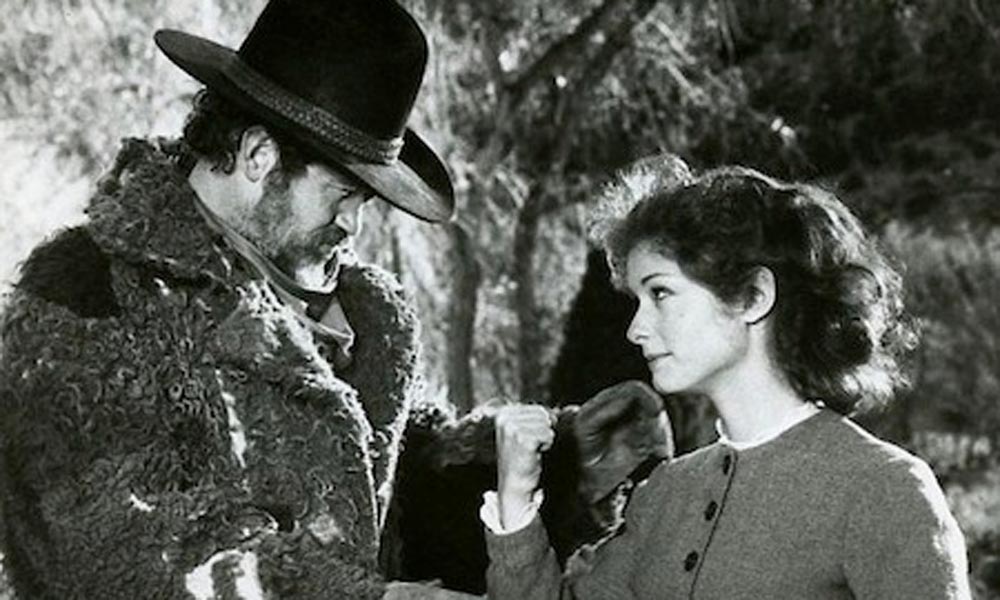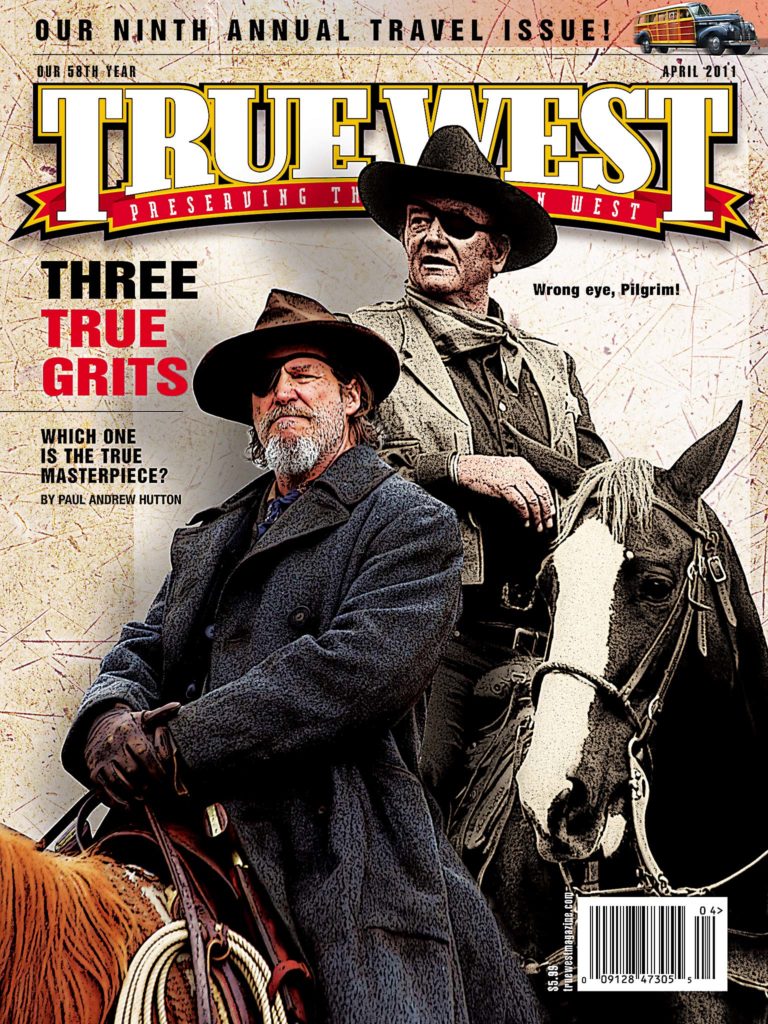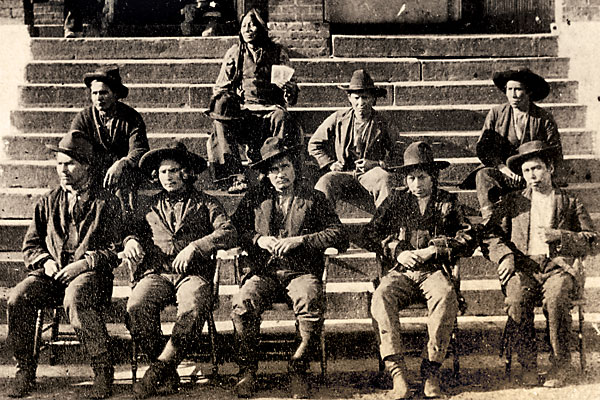
Fort Smith was once the last bastion of law and order before the wild frontier.
In the heyday of Fort Smith, a popular saying went, “There is no law west of St. Louis and no God west of Fort Smith.”
On the border of Arkansas and Oklahoma, Fort Smith was once, as they say, the last bastion of law and order before the wild frontier. The federal court in Fort Smith had an unbelievably large coverage area: 75,000 square miles of lawless Indian Territory (now the State of Oklahoma) with one judge to hear all those cases. Any crimes committed in Indian Territory were automatically federal cases. Seeing the frontier as a probable safe haven, troublemakers from all over the country hid out in this territory, raising hell and robbing, raping, murdering and generally terrorizing anyone who got in their path.
To keep the peace among the many rival American Indian tribes situated over the border in Indian Territory and for the ranchers and railroaders, dozens of deputy U.S. marshals were stationed in Fort Smith. They were sent out with a subpoena to round up the accused and return with them to Fort Smith, dead or alive. (The deputies did their best to bring prisoners back alive, because they didn’t get paid for returning with a corpse.) The charged criminals might spend weeks or months in the putrid one-room jail known, for good reason, as “Hell on the Border” before standing trial in Judge Isaac C. Parker’s court. It is in Parker’s courtroom that Rooster Cogburn is being questioned on the witness stand when we first encounter him in True Grit.
Many of True Grit’s plot points are taken from actual marshals’ stories documented at the Fort Smith National Historic Site. Shared here with the town’s historical photographs are some of the facts and fictions behind the book and movie versions of True Grit.
True Grit novel’s chronology: 1820s-1925 (Historical Facts in RED)
1820s: Choctaw Light Horse (Tribal Police) organized in Mississippi.
1835: Reuben “Rooster” J. Cogburn born in Osceola, Missouri.
1861: Rooster’s family is burned out by Redlegs from Kansas.
June 4, 1861: Frank Ross enlists in Company H, 1st Arkansas Mounted Rifles (CS).
March 7-8, 1862: Frank Ross fights in the battle of Elkhorn Tavern (Pea Ridge) in Arkansas.
August 21, 1863: Rooster participates in William Quantrill’s raid on Lawrence, Kansas.
September 19-20, 1863: Frank Ross severely wounded in Battle of Chickamauga, Georgia. He is medically discharged and travels home.
1864: Mattie Ross is born.
April 28-30, 1864: Rooster loses his eye in a running battle near Lone Jack, Missouri (Jackson County), between Quantrill’s men (dressed in Union uniforms) and the 1st Missouri Militia (US) out of Warrensburg, following the massacre of three members of the 1st Missouri by the guerrillas. Rooster claimed that Cole Younger, who was present during the battle, saved his life.
Late Spring 1865: Rooster and his best friend Columbus Potter surrender to US authorities at Independence, Missouri. They violate their parole and leave town, robbing a US paymaster of $4,000. Potter heads to Arkansas, and Rooster moves to Cairo, Illinois
1866-74: In Cairo, Rooster marries, has a son named Horace and opens a restaurant called the Green Frog. His wife leaves him for her first husband and takes their son with her. Rooster’s restaurant fails. Rooster migrates to Texas and becomes a buffalo hunter, robs a bank in Las Vegas, New Mexico, freights in Denver, Colorado, and ends up working as a cow-boy back in Texas.
1872: The start of the Federal Court era in Fort Smith, Arkansas; the first hanging will take place a year later.
May 10, 1875: Judge Isaac C. Parker holds his first court. Of the 18 defendants who appear before him that day, 15 are convicted of murder and eight receive death sentences.
Early Spring 1876: Rooster, while cowboying for a rancher named Fogelson, is arrested by Deputy US Marshal Potter at Fort Reno, Indian Territory, for attempted murder of his boss.
April 1876: Rooster is hired as a deputy US marshal, courtesy of his best friend Potter.
September 7, 1876: James-Younger Gang fails in their attempt on the First National Bank of Northfield, Minnesota. Cole Younger captured and sentenced to life in Stillwater Prison.
March 4, 1877: Rutherford B. Hayes is sworn in as president of the United States.
Spring 1878: Rooster kills Dub Wharton in self-defense in the Goingsnake District of the Cherokee Nation.
August 1878: Rooster wounds Ned Pepper in the upper lip. Theron Chelmsford (a.k.a. Tom Chaney) murders Texas Sen. Bibbs in Waco. Ranger Sgt. La Boeuf pursues. Chelmsford escapes to Monroe, Louisiana, and Pine Bluff, Arkansas, before going to work for the Ross family in Yell County.
November 2, 1878: Rooster and his best friend Potter kill all but one of the Wharton clan. Odus Wharton is arrested and transported to Fort Smith. Potter is mortally wounded.
November 8, 1878: Potter succumbs to septic fever, leaving a widow and six children.
November/December 1878: Frank Ross leaves his farm in Yell County, Arkansas, with his tenant and hired man Tom Chaney for Fort Smith, where he plans on buying Texas Mustangs for use in deer hunting.
December 20, 1878: Mattie arrives in Fort Smith with Yarnell. Historically two men (not three) were hanged at Fort Smith on this date and a privacy fence had been erected around the gallows. Either True Grit author Charles Portis slipped in his research, or Mattie was “mistaken” in her recollections.
Late December 1878: Odus Wharton escapes.
January 1879: Rooster kills escapee Odus Wharton and a confederate at Fort Gibson, Cherokee Nation. Rooster is forced to resign over the incident and leaves Fort Smith. He takes the widow Potter and her six children to San Antonio, Texas, where he presumably marries her.
April 1892: Rooster, having left his wife in Texas, is employed (along with traveling companion and former U.S. Marshal in the Indian Territory Thomas Carlton Smith) as a regulator by the Wyoming Stock Growers Association in the Johnson County War. The pay is $5 per day, plus $50 for each rustler killed.
1896: The federal court at Fort Smith loses jurisdiction over Indian Territory. That same year, by coincidence, Judge Parker dies.
1897: The town burns down the gallows. Today, a re-created gallows sits at the Fort Smith National Historic Site. On the anniversaries of the executions, a noose hangs from the gallows for each man hanged on that day, and park interpreters tell the stories of the condemned and their victims.
July 10, 1901: Cole Younger paroled.
May 20, 1903: The Great Cole Younger and Frank James Wild West Show performs in Mansfield, Missouri. Following the performance the show packs aboard the St. Louis and San Francisco Railway (Frisco) and passes through Jonesboro, Arkansas (where Rooster passes at 68 from “Night Hoss”), en route to Memphis, Tennessee.
May 23, 1903: The Wild West Show arrives in Memphis and sets up at the Chickasaw Baseball Park. Rooster is initially interred in the Confederate cemetery in Memphis, Tennessee.
May 27, 1903: The Wild West Show plays Jackson, Tennessee.
1925: Mattie writes her memoir.
Photo Gallery
The federal jail and gallows, photographed between 1890-94. The gallows is to the left, the next building is the old quartermasters storehouse, the next is unknown, the central building is the jail with the new addition to the left and a second floor added to the first building, and the building all the way to the right is the old guardhouse/women’s jail.
– All images courtesy Fort Smith National Historic Site –


